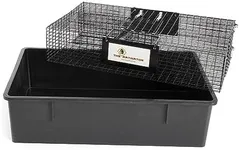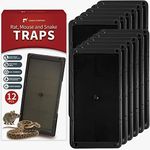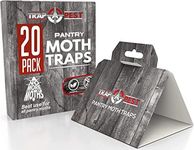Buying Guide for the Best Rat Traps
Choosing the right rat trap is important for effectively dealing with rodent problems in your home or business. The best trap for you depends on your environment, your comfort level with handling pests, and whether you prefer a humane or traditional approach. Understanding the different types and features of rat traps will help you make a choice that is both effective and suitable for your needs.Trap TypeTrap type refers to the mechanism by which the trap catches or kills the rat. The main types are snap traps, electronic traps, glue traps, and live-catch traps. Snap traps are traditional and kill rats quickly, electronic traps use a high-voltage shock, glue traps immobilize the rat, and live-catch traps allow for release elsewhere. Your choice should depend on whether you want a humane solution (live-catch), a quick kill (snap or electronic), or a low-maintenance option (glue). Consider your comfort with handling live or dead rodents and your ethical preferences.
Ease of UseEase of use describes how simple it is to set, bait, and clean the trap. Some traps require careful setup and can be tricky to handle, while others are designed for quick and safe operation. If you are new to trapping or want to avoid touching the rodent, look for traps labeled as easy to set or with hands-free disposal features. More complex traps may be suitable for those with experience or who need to set multiple traps at once.
SafetySafety is about how likely the trap is to cause accidental injury to people or pets. Some traps, especially snap traps and electronic traps, can be dangerous if not handled properly. If you have children or pets, consider traps with safety covers or those that are enclosed to prevent accidental triggering. Glue and live-catch traps are generally safer but may still pose risks if not placed carefully.
ReusabilityReusability refers to whether the trap can be used multiple times or is meant for single use. Reusable traps are more environmentally friendly and cost-effective in the long run, but they require cleaning and resetting. Disposable traps are convenient and hygienic, as you can throw them away after use, but they may be less economical if you have a persistent problem. Choose based on how often you expect to need the trap and your willingness to handle cleaning.
Size and PlacementSize and placement relate to the physical dimensions of the trap and where it can be used. Larger traps are necessary for bigger rats, while smaller traps may be suitable for tight spaces or smaller rodents. Consider where you have seen rat activity and measure the available space to ensure the trap will fit. The right size and placement will increase the chances of catching the rat effectively.
Humane ConsiderationsHumane considerations involve how the trap deals with the rat. Some people prefer traps that kill instantly to minimize suffering, while others want to avoid killing altogether and opt for live-catch traps. Think about your personal values and the local regulations regarding pest control. If you want to avoid causing harm, look for traps specifically marketed as humane or no-kill.
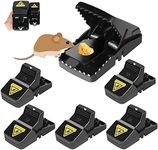
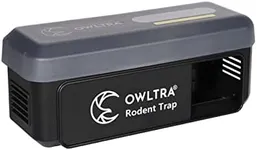
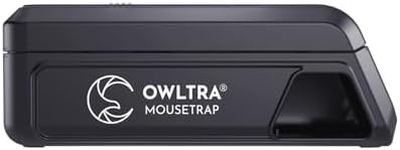
![[Upgraded] Mouse Trap Bucket,Rat Tr](https://images-proxy.bestreviews.guide/-cAdFFgPcXGcOipqNlS2r2v4GmA=/0x150/https://m.media-amazon.com/images/I/41Cv8qnobQL._AC_CX679_.jpg)


